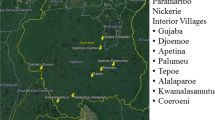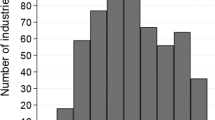Abstract
A scoping study, the National Human Exposure Assessment Survey (NHEXAS) was conducted in EPA Region V from July 1995 to May 1997. This probability-based population study provided an opportunity to examine the mercury levels in 182 participants who provided hair samples. A sensitive analytical procedure based on atomic fluorescence spectrometry was developed and evaluated for the analysis of Hg in approximately 5 mg of human hair. The correlation coefficient (r), the precision, and bias were 0.9983, ≤1.6%, and ≤8%, respectively, for standard curves in the hair matrix. The method detection limit (MDL), recovery of Hg in a certified sample (NIES-13), precision (% RSD) for duplicate extract analysis, and precision for duplicate sample analysis averaged 12 ppb (range 4 to 22 ppb), 100±3% (N=27), 4.6±2.8 (N=18), and 12.5±7.4 (N=17), respectively, over the 7 to 8 months of sample analysis. The low MDL yielded 95% of the samples with measurable values, permitting the entire distribution of Hg levels to be characterized. Comparison of annualized Hg distribution in hair with and without background correction revealed a negligible bias on the distribution (1.47% at the 90th percentile). Also, a comparison of the unweighted and nonannualized weighted Hg levels throughout the percentile distribution indicated a small deviation in the upper tail (95th percentile) and is attributable to the small sample size (N=182). The mean, median, and maximum of the annualized Hg levels in hair were 287, 204, and 3505 ppb, respectively. The 75th percentiles were 335 and 368 ppb for the weighted annualized and unweighted distributions, respectively. The percent of individuals in three age categories (0–24, 25–49, and 50 years and older) who exceeded the 75th percentile showed a linear increase with age. Males (N=81) had 10% and 20% lower mean levels than females (N=101) for unweighted and annualized weighted Hg data, respectively. The application of this methodology for characterizing hair Hg levels in fish-eating populations is discussed.
This is a preview of subscription content, access via your institution
Access options
Subscribe to this journal
Receive 6 print issues and online access
$259.00 per year
only $43.17 per issue
Buy this article
- Purchase on Springer Link
- Instant access to full article PDF
Prices may be subject to local taxes which are calculated during checkout
Similar content being viewed by others
Author information
Authors and Affiliations
Corresponding author
Rights and permissions
About this article
Cite this article
PELLIZZARI, E., FERNANDO, R., CRAMER, G. et al. Analysis of mercury in hair of EPA Region V population. J Expo Sci Environ Epidemiol 9, 393–401 (1999). https://doi.org/10.1038/sj.jea.7500056
Published:
Issue Date:
DOI: https://doi.org/10.1038/sj.jea.7500056
Keywords
This article is cited by
-
Exposure to total and methylmercury among pregnant women in Suriname: sources and public health implications
Journal of Exposure Science & Environmental Epidemiology (2021)
-
Mercury health risk assessment among a young adult Lebanese population
Environmental Science and Pollution Research (2017)
-
Relationship Between Localization of Gold Mining Areas and Hair Mercury Levels in People from Bolivar, North of Colombia
Biological Trace Element Research (2011)
-
Trophic Transfer Efficiency of Mercury to Lake Whitefish Coregonus clupeaformis from its Prey
Bulletin of Environmental Contamination and Toxicology (2008)
-
Determination of Iodine in Low Mass Human Hair Samples by Inductively Coupled Plasma Mass Spectrometry
Bulletin of Environmental Contamination and Toxicology (2007)



